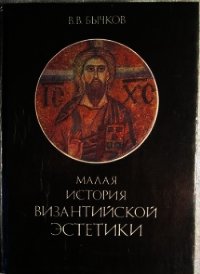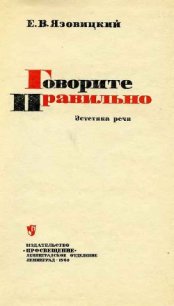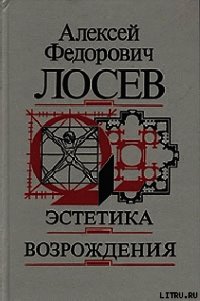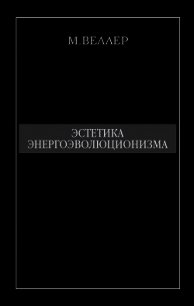Эстетика отцов церкви - Бычков Виктор Васильевич (полная версия книги txt) 📗
So ist Augustinus, ohne es vielleicht selbst gewollt zu haben, der erste in der Geschichte das ästhetischen Denkens, bei dem sich ein einheitliches ästhetische Inhalt (die Schönheit), das ästhetische Subjekt, die Prozesse der ästhetisches System einschließlich aller grundlegenden Komponenten dieses Systems nachweisen läßt: das ästhetische Objekt (Natur und Kunst), der ästhetische Inhalt (die Schönheit), das ästhetische Subjekt, die Prozesse der ästhetischen Wahrnehmung (und des Urteilens) und jene des ästhetischen Schaffens. Diese Komponenten sind in seinem System nicht von mechanischer Art (wäre es so, würde im Grunde niemand darüber sprechen); sie stellen reale wechselseitige Zusammenhänge und komplizierte Beziehungen dar. Darin besteht die wichtigste historische Bedeutung der Ästhetik des Augustinus; sie ist der eingehenden Beachtung wert.
Noch zu Lebzeiten Augustinus fiel Rom, und damit wurde die lange Linie ästhetischen Denkens, die zu Augustinus hinführte, im Westen für lange Zeit unterbrochen. Die Spuren ästhetischen Denkens, des antiken und auch des neuen augustinischen, wurden schnell verwischt. Deshalb fand Augustinus keinen direkten Nachfolger, der sein Denken fortgesetzt hätte. Erst als die mittelalterliche Ästhetik voll entwickelt war, nahm sie seine Ideen auf und entwickelte viele von ihnen weiter. Doch kennt das Mittelalter keinen Denker, der ein vollständigeres ästhetisches System entwerfen hatte als Augustinus. Die Ästhetik des Augustinus blieb Norm und Vorbild, und wir stoßen im künstlerischen Denken des gesammten Mittelalters auf viele seine Ideen. Überdies behalten einige seine Ideen (z. B. Aspekte seiner Zeichentheorie, seine Lehre vom Mechanismus der ästhetischen Wahrnehmung und des ästhetischen Urteilens, seine Überlegungen zu strukturellen Gesetzmäßigkeiten der Schönheit und der Kunst, insbesondere das Gesetz des Kontrastes usw.) ungebrochene Bedeutung bis in unsere Tage.
SUMMARY
"AESTHETICA PATRUM" in its systematic treatment of the early Christian aesthetics as reflected in Patristic literature is a pioneering study in international scholarship. The Church Fathers, like the ancient and medieval thinkers in general, did not deal with the problems of aesthetics as such; it was not until much later, in the Modern era, that these questions became the object of scholarly reflection. Aesthetic consciousness, however, as one of the most ancient non-verbal forms of consciousness which was embodied most fully in artistic culture and religious cult, manifested itself distinctly in the numerous theological treaties of the Church Fathers. The author demonstrates that the aesthetic, in its many forms of manifestation, appears as one of the essential ways by which a human being comes to God through a system of sense-perceptible symbols. Thereby his approach extends far beyond the frame of traditional (in a modern European sense) aesthetics.
The aesthetic consciousness of the Church Fathers is considered in the context of the formation of their general philosophical and theological views. The author discusses the formation of the fundamental propositions of the Christian doctrine (concerning God, the incarnation of Logos-Christ, the creation of the world, the sophijnost' of the creation, the concept of love, the problem of the relationship between the human person and the Church etc.) and the place and role of aesthetic ideas and phenomena in the formation of these.
The book consists of two parts. The first part is dedicated to the aesthetic-culturological ideas of the early Church Fathers (the 2 - 3th c. apologists): Justin Martyr, Irenaeus of Lyons, Athenagoras, Clement of Alexandria, Origen, Dionysius of Alexandria, Tertullian, Minucius Felix, Cyprian, Arnobius, Lactantius. The author traces their Graeco-Roman and Middle East sources, in particular the elements of Ciceronian aesthetics (whose influence on the Latin Fathers was substantial), the aesthetic ideas of Philo of Alexandria, the teaching on beauty of Plotinus, the Old Testament ideas of Sophia, art, the creation of the world and artistic activity etc.
However, the main attention is focused on the birth of new Christian aesthetic consciousness on the basis of the "aesthetics of negation" (an attitude towards pagan artistic culture), in particular, on the understanding of art, artistic activity, imitation, image, likeness, symbol, sign, allegory, the beautiful and the sublime. The author demonstrates the change of aesthetic preferences in the new culture as compared to the ancient.
Many ideas and principles of the apologists in the Latin world were developed by one of the most celebrated Fathers of Western Christianity, St.Augustine. The second part of the book is dedicated to the detailed analysis of his aesthetic system (perhaps, a unique system of such kind in Patristics). Here the author demonstrates the role that aesthetic phenomena and paradigms have in the Augustinian historiography and his teachings on being, cognition and the Church. The rather detailed Augustinian concepts and ideas of the universal order, number and rhythm, the beautiful (and its numerous laws such as harmony, commensurability, likeness etc.), artistic activity, the Christian understanding of art (and especially rhetoric and music - the meaning of jubilatio), his theories of the sign and aesthetic perception have formed a solid foundation for Western European medieval aesthetics. Moreover, some of the questions examined by Augustine are still important for contemporary aesthetics.
The book is based on the study of Greek and Latin sources, many of which still have not been translated into modern languages, as well as on the most recent critical literature on Patristics.
At the present time the author is working on the second volume of the Aesthetica Patrum which is dedicated to the Church Fathers of the 4th century, the "Golden Age" of Patristics.
RÉSUMÉ
"Aesthetica Patrum" représente une étude systématiquce première dans la science mondiale de l'esthétique des débuts du christianisme reflétée dans la littérature patristique. Naturellement, les pères de l'église, comme les penseurs de l'antiquité et du Moyen Age en général, ne se penchaient pas particulièrement sur les problèmes de l'esthétique, car la réflexion scientifique en est venue bien plus tard, seulement au temps nouveau. Pourtant la conscience esthétique comme une des formes de conscience non-verbale la plus ancienne, s'incarnant implicietment le plus pleinement dans la culture artistique et le culte religieux, a été mise en relief dans plusieurs textes théologiques des pères de l'église. L'étude démontre que l'esthétique dans plusieures formes de son expression est représenté comme une des voies importantes de l'homme vers Dieu à travers un système de symboles perçus sensuellement. Ainsi le lecteur est conduit loin des cadres de l'esthétique traditionelle (dans le sens européen des temps nouveaux).
La consience esthétique des pères de l'église est considérée dans le contexte de la formation de leurs idées théologiques-philosophiques générales; est démontrée la genèse des postulats fondamentaux du dogme chrétien (Dieu, Incarnation du Logos-Christ, création de l'univers, Sophie de la création, conceptions de l'amour, problèmes de l'homme et de l'église etc.), la place et le rôle dans leur formation des conceptions et phénomènes esthétiques.
Le livre contient deux parties. La première est consacrée aux options esthétiques-culturologiques des premiers pères de l'église (apologistes du II - III siècles): Justinus Philosophe et Martyre, Irenaeus de Lyon, Athenagoras, Clément d'Alexandrie, Origènes, Dionysius d'Alexandrie, Tertullian, Minucius Félix, Cyprian de Carthage, Arnobius, Laktantius. Leurs sources gréco-romaines et de proche Orient sont démontrées, notamment des éléments de l'esthétique de Cicéron (qui a beaucoup influencé les pères latins), les idées esthétiques de Philo d'Alexandrie, la conception du beau chez Plotin, les regards de l'Ancien Testament sur la Sophie, l'art, la création de l'univers et la création artistique etc.




